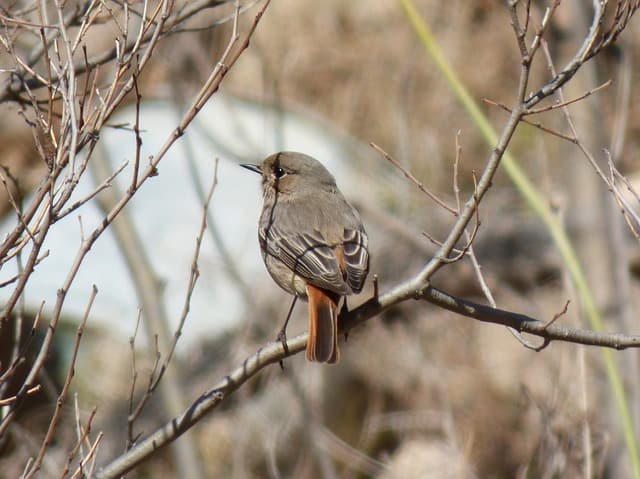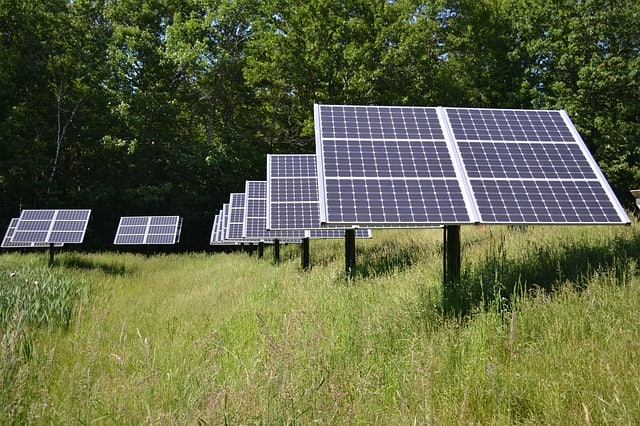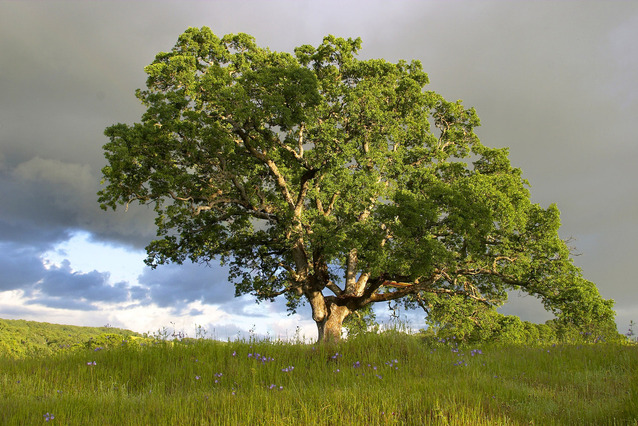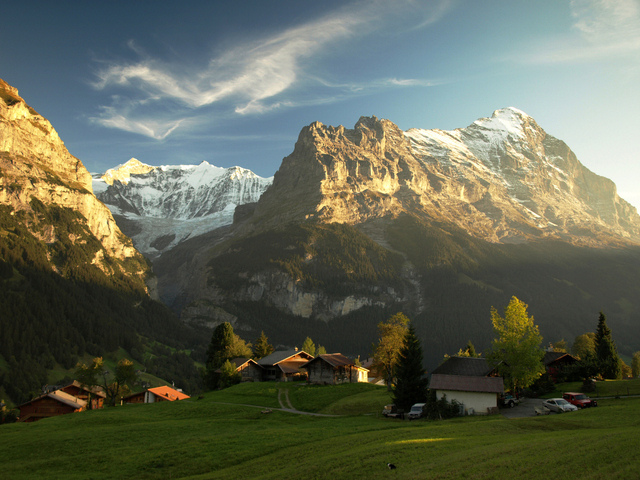Birds are cosmopolitan animal creatures that are found in almost all kinds of ecological habitat on earth. They are notorious for flight and certain unique features like feathers and eggs which have hardened shells.
These beautiful creatures sparked the idea of the aircraft we enjoy today are taxonomically called Aves, and they include many species from the gigantic ostrich to the small hummingbird and as earlier stated exists in both terrestrial and aquatic habitats.
Environmental pollution has remained a global concern especially with the recent surge in urbanization and industrialization all over the globe. The heightened exploitation of fossil energy sources and forest areas coupled with the use of non-biodegradable products such as plastic, poor disposal of both domestic and industrial waste and increased sound-producing activities, the world has never witnessed the threshold of environmental pollution it is experiencing now. These human activities have resulted in the contamination of the soil, water, and air causing soil, water, and air pollution respectively.
Air represents the mixture of many gases in correct quantities in the atmosphere of the earth that is utilized by both plants and animals in both land and water for respiration and ventilation.
Air pollution then simply refers to the alteration of the quantities of the gas mixtures in the atmosphere due to biological, physical or chemical addition and because every living thing depends on one form of these gases without alteration to survive, air pollution threatens the safety and comfort of every living thing including plant and animals.
However, air pollution is more worrisome to our feathered friends, the birds. This is because they don’t only obtain some of these gases for respiration which is necessary for survival, they spend most of their time there—birds literally live in the air alongside trees and water occasionally (as seen in some species).
Also, air pollution has other effects on water quality and plants which serves as sources of food, shelter, and breeding for some of these birds. Therefore, beyond having a direct impact on their respiration and comfort, air pollution also has an indirect effect on birds as briefly stated above.
With increasing fossil fuels combustion, agricultural activities involving chemical agents like pesticide, insecticides and herbicides, industrial exhausts, and mining activities, air continues to be associated with pollutants and progressive pollution across the globe, and this has many adverse effects on both plants and animals, and precisely feathered animals—the birds.
Effects of Air Pollution on Birds
Many pollutants result in air pollution that affects the wellbeing of birds. Some of the main ones include Sulfur oxide and carbon monoxide which are products of fossil fuel combustion; ammonia which results from agricultural inputs; nitrogen oxide and numerous organic hydrocarbons like methane which are by outcomes of industrial and mining activities and the use of renewable energy sources like biomass.
These pollutants cause air pollution, and each of them predisposes different species of birds to danger through different mechanisms. The effects of air pollution on birds include:
-
Degradation and Loss of Habitat
Pollution has always threatened where living creatures dwell, and this is also a critical effect of pollution on birds—they lose their dwelling place and homes. Pollutants such as Volatile Organic Compounds (VOCs) which are products of certain forms of fuels and chemical solvent like ozone (O3) at ground level destroys the plant habitats such as trees that offer many birds a place to feed, shelter and breed.
For example, it has been shown that trees such as cottonwood and ponderosa pine are susceptible to ground ozone damage. In addition to this, soil acidification that is a result of acid rains which are formed due to increased atmospheric air pollution. Soil acidification has been shown to have devastating effects on trees such as the ponderosa pine which are suitable habitats for birds.
In addition to this, environmental air pollutants such as smoke and smog alongside ozone also threaten the respiratory function of birds. and when a particular portion of the atmosphere is under consistent pollution with these pollutants, the birds which once live around those climes tend to migrate to other climes and so lose their initial habitats which are sometimes lost altogether.
-
Starvation and Scarcity
Most birds rely on the availability of other creatures and the fruits of certain plants to feed. When fruit-bearing trees are lost to the adverse effects of air pollution, many birds also lose food sources for survival. This is mostly caused by soil pollution (soil acidification) which often results from acid rains which are the direct product of accumulated pollutants like sulfur and nitrogen oxides in the atmosphere.
This also causes changes in seawater pH which causes most fringe aquatic animals that serve as food sources to these birds to die or migrate, and all of these alter the complex food chain in the ecosystem resulting in scarcity and starvation amongst these birds.
-
Respiratory Dysfunction
Major air pollutants such as Nitrogen oxide, Sulphur oxide, and even ozone cause respiratory dysfunction in most birds by affecting the cilia of their lungs. Birds have a unique respiratory system that makes them to easily inhale these air pollutants in large quantities. Physiologically, unlike humans, birds inhale oxygen and exhale carbon dioxide in just one breath.
They do not expand and contract their lungs repeatedly, and this is fundamental for flight. And because birds are animals which spend most of their time in open space, they inhale most of these harmful pollutants and their respiratory pattern is grossly affected. The cilia of their lungs are responsible for air filtering. Therefore, when is lost or depleted due to these pollutants, these birds become susceptible to respiratory dysfunction such as dyspnea or pulmonary edema.
-
Immunodeficiency or Immunosuppression
One other notable effect of the air pollutants such as Sulphur oxide which is an end product of coal combustion is that it reduces the erythrocyte levels in birds. This pollution induced anemia results in immunodeficiency or immune-suppression which leaves these birds susceptible and vulnerable to infectious diseases.
-
Impaired Reproductive Success
Air pollution and its related effects affect the reproductive cycles of most birds. This has been strongly connected to air pollutants such as heavy metals like copper, lead and nickel. The major effects include laying fewer and low-quality eggs and recording poor hatching successes. For example, chemical poisoning has been related to a decrease in the hatching success in pied flycatchers. Furthermore, some of these birds lose their habitats leaving unhatched eggs due to pollution.
-
Elevated Stress Levels
Air pollution results in the loss of habitats or habitat survival benefits for most birds. Sometimes, when these birds migrate to other habitats in a bid to survive, they encounter other problems such as increased noise called noise pollution. Noise pollution is the major cause of post-traumatic stress. Birds that dwell or nest close to areas which high decibels such as oil and gas compressors areas have been shown to develop a high level of stress.
This has been attributed to be due to the low levels of the stress managing hormone, corticosterone in birds. Reduced Oxygen Tension: Many birds are water dwellers, and they use oxygenated water to regulate ventilation and feed well. Air pollution which involves the vast accumulation of pollutants such as nitrogen oxide results to the growth of nitrogen-loving alga on water surfaces. This is most often called eutrophication.
These algae significantly reduce the oxygen tension these birds need for homeostasis. This also results in the death and migration of most food-giving aquatic creatures for these birds.
-
Exposure to Predators
Air pollution results in climatic changes that could alter the natural architecture of the forests and significantly cause the thinning of tree canopies that protect some of these birds and their nests from light and most importantly their hunting predators. Some of them eventually lose their nests while others migrate in search of a safer place resulting in loss of habitat.
-
Mutation
Common air pollutants from traffic such as polycyclic aromatic hydrocarbons (PAHs) and certain toxic chemicals have been shown to cause some form genetic mutation in some bird species like the Double-crested Cormorants, and this could result to some natural features like survival and breeding benefits which could be passed to their offspring.
-
Loss of Direction
Air pollutants sometimes accumulate in great quantity and this result in smog. Smog consists of fog and smoke co-existing in the atmosphere. This causes birds to lose their migratory routes which they use to make safe home trips. Sometimes, when it persists for a long time, these birds eventually lose their natural habitats.
Consequently, this migration may also lead them to places where high-intensity lights are used. High light intensity also causes confusion in birds that use mild star lights to always trace their routes when moving from one place to another.
-
Disease Infection
Birds serve as both intermediate, definitive and reservoir host for many diseases causing and even human-related microorganisms. Therefore, they are readily infected by these microorganisms which may be parasites, viruses, fungi or bacteria in the air.
In addition to this, air pollution causes immunodeficiency which predisposes these birds to disease infection. This infection most often could lead to disease outbreaks and epidemic since birds relate closely with one another.
-
Loss of Nesting Resources
Nitrogen oxide is one of the major air pollutants in terrestrial habitats that have a direct and indirect impact on birds. The accumulation of nitrogen oxide in the atmosphere results in the invasive growth of nitrogen loving plants at the expense of the natural plants of such bird habitats such as Lichens which are great resources for nest building for these birds.
-
Depletion of Biodiversity and Extinction
Nothing destroys biodiversity like the loss of habitat, forest fires, and smoke can cause serious air pollution, which is a major cause of loss of habitats for birds. As these birds continue to lose their habitat and beneficial natural features due to various harsh conditions and migration, localized extinction will begin to set in, and this eventually leads to loss of bio-diversification.
The adverse effect of air pollution on birds is quite numerous, but more importantly, they are significant. These effects are silently taking away our feathered friends and flight sight from us.
Conclusion
Environmental pollution including air pollution is a threat to a bird’s life wherever it exists. It affects humans, animals, fishes and even birds. The effects of air pollution on birds remain an area requiring more research as only a few articles exist in this regard.
This could be credited to the fact that both birds and the aim medium where they live show much instability especially as it regards to long-term effect studies. However, some of the direct and indirect effects of air pollution on birds have been succinctly described above despite the paucity of authoritative findings backing some of them.
Furthermore, birds are integral members of the ecosystem and whatever affects them will also have direct or indirect on us too. Some of these birds are food sources to man and other animals, while some others have mutuality relationships with many other animals. For example, some birds remove ticks from some herbivores in exchange for food and shelter from predators.
Furthermore, these birds contribute little or nothing to the menace air pollution is causing them. Most of these pollutants and their consequent pollution find their roots from human activities. Therefore, it is imperative that we all come together to preserve “mother nature” because this planet and the existing animals in it are the only home we’ve got left.
Therefore, conscious efforts must be engaged to create public awareness and education that is sufficient to drive social change towards preserving a beneficial ecosystem.
In addition to these, resources must be channeled from all quarters into research in a bid to discover and further exploit other sources of renewable energy like solar, biomass, hydro and geothermal energies to reduce dependence on fossil fuels whose use contribute significantly to these atmospheric pollutants.
Also, policy formulation is also crucial. Legislations and deliberations should be targeted at creating legal institutions without political interferences which will enforce eco-friendly laws that will regulate sewage and industrial waste disposal.
Birds and other animals must be protected from air pollution, and this protection lies in the hands of everyone. The effects of environmental pollutions on birds are numerous and weighty. We must be committed to making these flying creatures safe and comfortable.





[…] to reliable sources, altering the quantities of gas mixtures in the atmosphere caused by physical, chemical, and […]